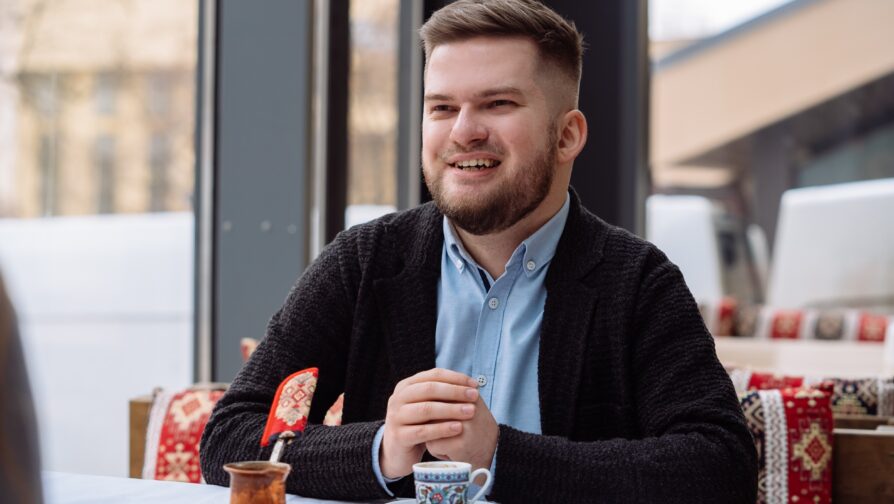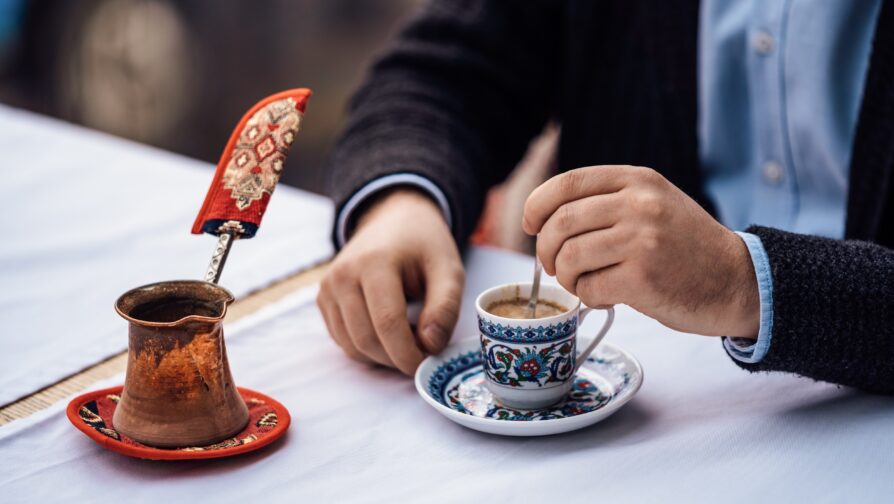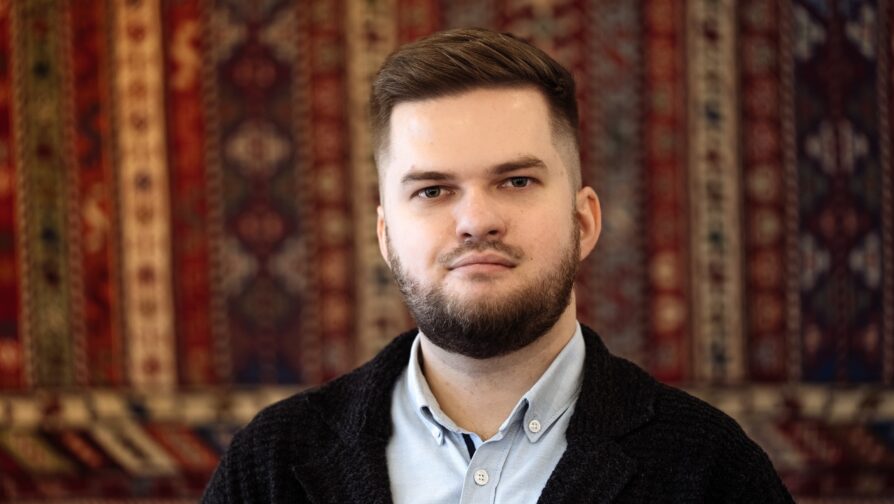After seven years of internal displacement, IDPs-changemakers make difference in their communities
The 2014 events in Crimea united society in a joint effort to protect the vulnerable. CrimeaSOS, a non-governmental organization, was established seven years ago in response to these events. Since then, the organization has been gradually changing and developing as it continued to offer help to internally displaced persons. At first, CrimeaSOS provided assistance to internally displaced persons from Crimea; its remit was then extended to people displaced from Eastern Ukraine. For the sixth year in a row, CrimeaSOS, with the support and partnership of UNHCR, promotes community initiatives of IDPs from Crimea and Donbas.
CrimeaSOS first originated from three volunteers, and their shared desire to help. Now the organization has an office in Kyiv and a strong team of employees and volunteers. We talked with Denys Savchenko, the head of this organization, about people’s needs as they enter the seventh year of forced displacement, CrimeaSOS’ activities and the network of IDPs-changemakers they work with.
Denys, thank you for agreeing to the interview. Could you please tell us how many internally displaced people there are now from Crimea and Donbas, and in which regions they live?
Today, according to the Ministry of Social Policy of Ukraine, there are about 1.46 million IDPs in Ukraine. Of these, approximately 49,000 people are registered IDPs from Crimea. However, from the communication of CrimeaSOS with people from the peninsula, we see that the number of Crimeans who either temporarily or permanently reside on the Ukrainian mainland is much higher: at least 100,000 people.
Internally displaced persons from Crimea have settled throughout Ukraine. But if we look at the Crimean Tatar population, I would like to note four main locations. Lviv has been the main location since 2014 given that the Crimean House, a public and cultural center for Crimean Tatars, opened there. The city and region of Kyiv are very popular, while the regions of Odesa and Kherson also host many Crimean Tatar IDPs. This is understandable, considering the family ties between these regions and their proximity to one another.
As of 2021, there are more than 1 million IDPs from the Luhansk and Donetsk regions who also have moved to different parts of Ukraine. Most IDPs from eastern Ukraine are in the Donetsk, Luhansk, Kyiv, Zaporizhia, Kharkiv, and Dnipropetrovsk regions. Our organization works more with activists who moved further, to Western Ukraine.
In the seventh year of protracted internal displacement, what are the needs of those who have moved from Eastern Ukraine and the Crimean Peninsula?
The issue of permanent housing for IDPs is of utmost priority. We need to understand that the vast majority of IDPs live in rented accommodations, while less than 1% live in so-called collective centres that are not suitable for long-term residency in most cases. There are also legal issues as, currently, IDPs cannot receive services and payments from the state unless they provide their IDP certificates. Consequently, those who have been living in host communities for a long time and cannot return home are forced to remain “perpetual IDPs”. This hinders their full integration.
Access to quality education is important. Although there are many positive developments in this direction, in my opinion, the issue of attention, care, and support for young people should be prioritized.
As for social issues, it seems to me that the biggest problem remains the fact that most IDPs often do not feel welcomed in their new communities. This is because there are negative stereotypes about IDPs in society, which are largely unfounded. This causes problems that we often mention – it is more difficult for IDPs to find work, rent accommodation, do business, and they often need psychological support.
Crimean Tatars are a particular category of the affected population due to their history and special social context: because of historical events, they have a very strong connection with the territory of Crimea. Numerous cases of occupation and violence against the Crimean Tatars, in particular the 1944 deportation, strengthen their desire and intention to eventually return to their historical homeland and live there in peace.

Could you please tell us how CrimeaSOS was created?
Our organization started with a Facebook page created by three Crimean Tatar volunteers. These were: Tamila Tasheva, who is now the Deputy Permanent Representative of the President of Ukraine in the Autonomous Republic of Crimea; Alim Aliyev, who works now as the Deputy Director-General of the Ukrainian Institute, which deals with cultural diplomacy; and Sevgil Musaeva, the editor-in-chief of Ukrainian Pravda, an online publication. These people did not turn away from the events of February 2014, they sacrificed their own plans and careers for what was really needed: gathering information about events in Crimea and providing emergency assistance to those affected. When, closer to March 2014, the first IDPs began to leave Crimea for the Ukrainian mainland, it turned out that people needed legal advice and assistance with the resettling. The founders were then approached by a group of concerned people who wanted to help the displaced, who were forced to leave their previous lives and often had nowhere to go. In fact, these committed people, who were motivated only by their desire to help and make positive change, formed the core of our team. In addition, we receive donor support, especially from UNHCR, which has become the first and largest donor and partner of our organization.
How and when did you join the organization? What motivated you to work in the civil society sector?
I started working for CrimeaSOS in 2015 as a lawyer. Before that, I volunteered with this organization for several months. I have been Chairman of the board since August 2020. CrimeaSOS was, in fact, my first serious job after graduating from Taras Shevchenko National University of Kyiv. After graduation, while I was finding my way in the legal profession, people close to me advised me not to waste time, and to instead do something for the common good. This is how I became a volunteer at CrimeaSOS.
I was fascinated by the kindness and energy of the people who were already part of the team at that time, and I wanted to take part in their work. The fact that I began my professional life with a job at CrimeaSOS probably influenced my character, and the values and priorities that guide me now. At the time, I was a young person who had just graduated from university and didn’t know much about life and the challenges people could face. When I started working at CrimeaSOS and interacted with those affected by the conflict, I realized how valuable and important it is to help others.

When you started working with CrimeaSOS, how did your perception of Crimea and Donbas change? Have you learned anything new during these years?
By interacting with people from Crimea and Donbas, I saw how unique and versatile the history and culture of these regions are. A separate discovery for me was a close acquaintance with Crimean Tatars. By joining CrimeaSOS I learned more about them through people’s life stories. I was especially impressed by their traditional art, language, and food – they are amazing!
You have been working with CrimeaSOS for many years. What impressed you at the beginning of your work? How has the organization changed and developed over the years?
Perhaps I was most impressed by the stories and experience of distributing humanitarian aid to the affected people at the onset of our organizations’ activity when many different people came to the office. It was the most direct way for us to feel useful, to see the immediate effect of our activities. It was pleasant to hear the feedback from the people we helped.
As we developed our expertise, we realized that the organization had grown, it had become more experienced and capable. We now have the opportunity to implement more comprehensive, systematic, and long-term support. Now we position ourselves as a more professional and influential organization, which should take on more responsibility and not be limited to direct assistance, but also aim to create systemic changes at the legislative and societal levels, working with different communities in Ukraine. As a side note, our organization was one of the first in Ukraine to work at the community level of affected population.
In general, some of our projects are related to the provision of legal assistance, but these activities are funded by other donors. With the support and partnership of UNHCR, we support the initiatives of internally displaced persons from Crimea, Donetsk, or Luhansk oblasts. We see that, of the 73 IDP initiatives that we work with in 15 regions of Ukraine, most were created by people who left Eastern Ukraine. We were also lucky to cooperate with the wonderful initiatives of people from Crimea.
Could you please tell us, what do the IDPs initiatives that you cooperate with do? What have they already achieved?
We are very proud of the fact that, despite different working conditions, all the initiatives we cooperate with are engaged in very important and useful work. These include non-governmental organizations and initiative groups created by IDPs themselves, and there are initiatives where IDPs gave a powerful second breath to the development of organizations that already existed.
In our network, there are two civil society organizations that build housing for internally displaced persons: “Common Cause” (“Spilna Sprava” – in Ukrainian) in the Vinnytsia region and “Transcarpathia. Donbas” in the Zakarpattia region. They have come close to providing housing for internally displaced persons and we expect that their projects will be implemented, and that the housing will be built.
There are also organizations working on advocacy for important IDP issues as part of our project. A series of professional advocacy training was organized by CrimeaSOS in 2018, and in 2019 dozens of organizations joined the advocacy campaign for the right of IDPs to participate in local elections, coordinated by the NGO “Civiс holding “Group of Influence” (“Gromadskyi kholdyng “Grupa vplyvu” – in Ukrainian). This long-running campaign was a success, and IDPs were able to vote in the 2020 local elections.

We also work with many organizations that provide psychological help and support, including through art therapy. In Poltava, since 2016 the “Union of Active Women “Beehive” (“Spilka aktyvnykh zhinok “Vulyk” – in Ukrainian), a civil society organization, under Natalia Dida’s leadership has been conducting various art therapy events for IDPs and members of the host community.
“Dobrotvor”, a public organization from Korosten in the Zhytomyr region also consists of internally displaced people. This community sends humanitarian aid not only to IDPs but also to all those who need it throughout Ukraine. When the Prykarpattia region was affected by floods last year, Dobrotvor provided humanitarian assistance to those who were affected.
That IDPs stop dealing exclusively with internally displaced people and start caring for all Ukrainians, whether at the local or national level, is an important indicator of their success and integration. To me this is an indicator of the success of our work when people become change-makers and genuine activists.
In short, what are you most proud of in your work?
Probably what I am most proud of is the opportunity to meet many wonderful people who have set ambitious goals for the common good. By overcoming many obstacles and by making incredible physical, mental, moral, and spiritual efforts, they create change.
This article was edited by Giulia Ferrara. Find volunteering opportunities at https://www.onlinevolunteering.org/en
Photo: UNHCR/Anton Fedorov
Share on Facebook Share on Twitter